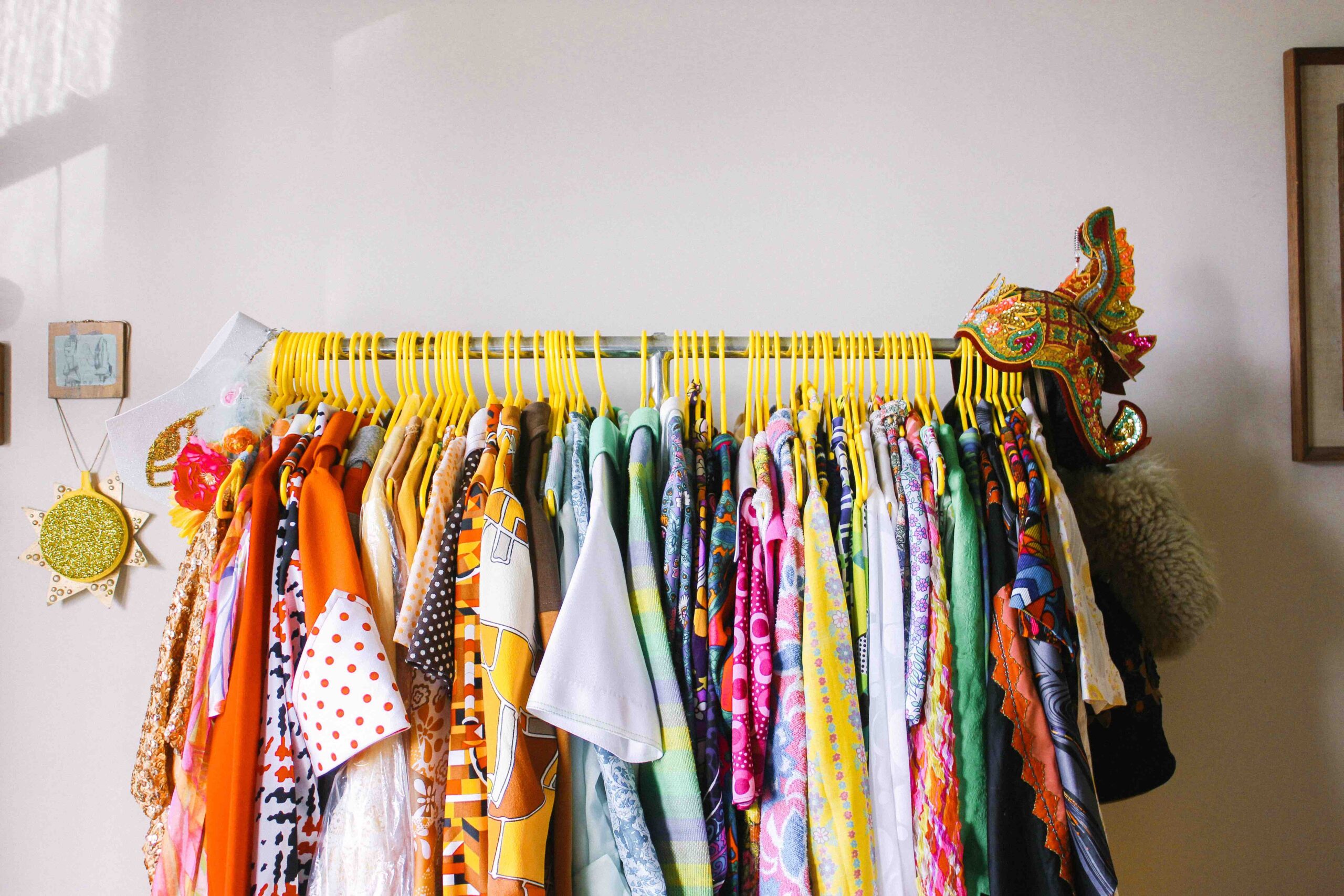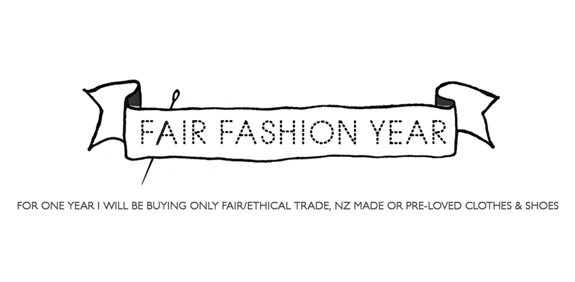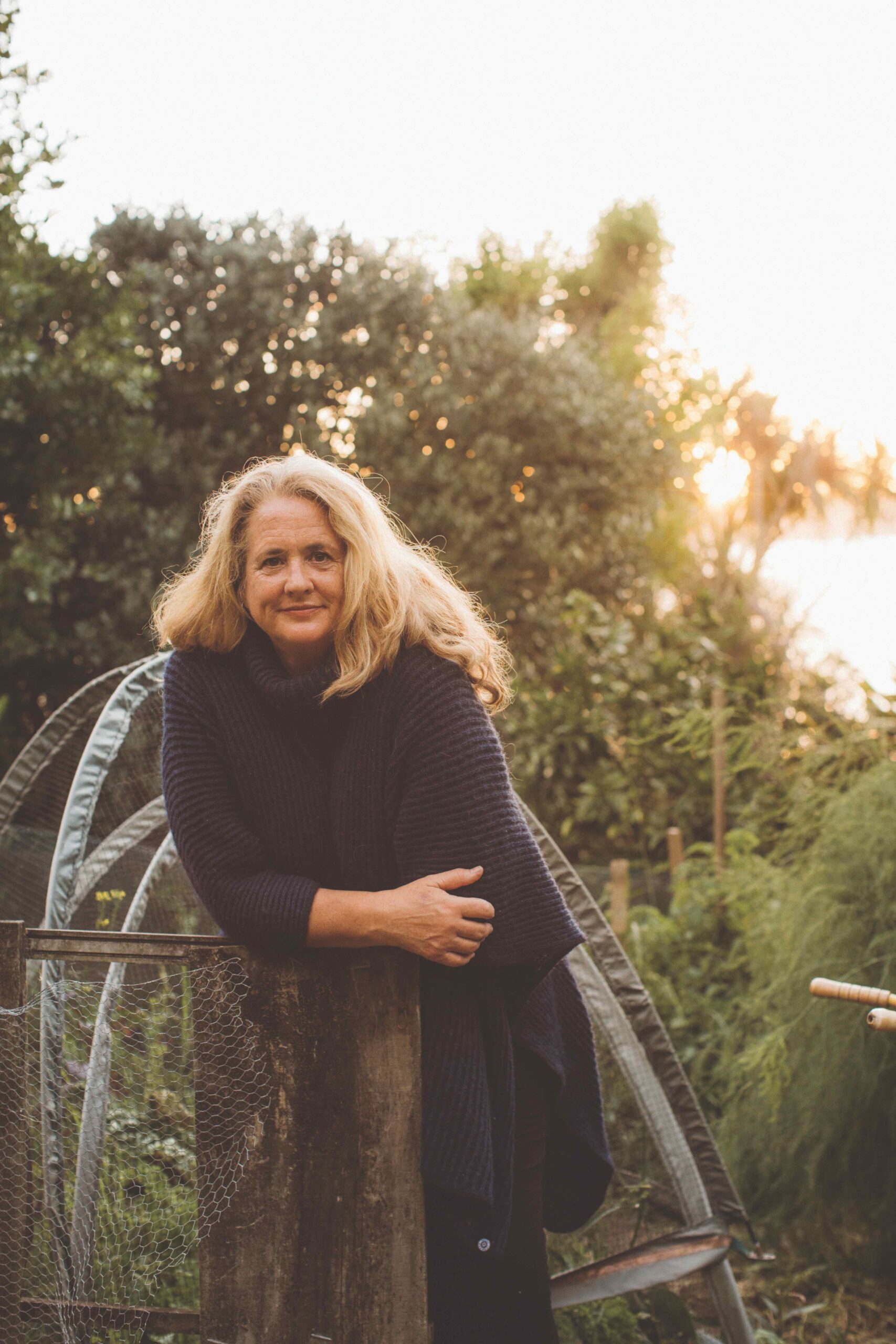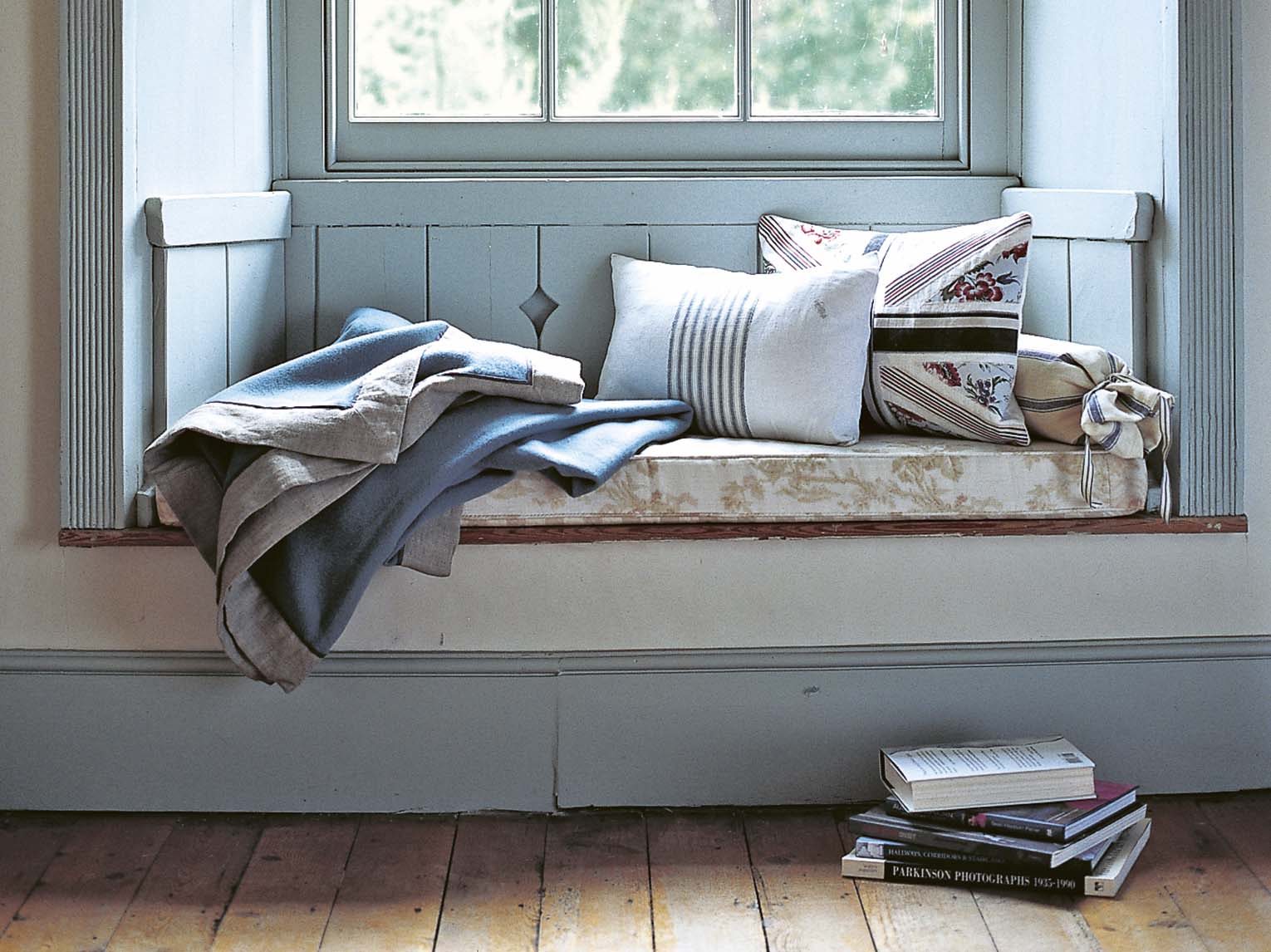Photography Sarah Tuck and supplied.
Want to build a great wardrobe solely from opshops? We spoke to three opshopping queens about how to do it.
Aimee Egdell, the owner and operator of Tatty’s second-hand clothing stores on Auckland’s High Street and Ponsonby Road, caught the opshopping bug young. “My mum founded the Recycle Boutique [another favourite Auckland second-hand spot] so I was brought up shopping second-hand,” she says. “But even outside of her having those stores, I loved opshopping. It was just the funnest thing in the world when Mum would give you a gold coin or a $5 note and you got to pick something out of the local opshop.”
Fellow keen opshopper Sally-ann Moffat, a Wellington-based stylist, and Gussie Larkin, member of bands Mermaidens and Earth Tongue, have similarly been opshopping since childhood. And all three women now boast wardrobes that are at least 90 per cent second-hand. It’s a decision that’s definitely conscious, they say, and second-hand shopping is both a habit and a source of joy for each of them.
Build your personal style
The pleasures of opshopping are numerous. All three women extolled the way opshopping lets you indulge and expand your personal aesthetic. Unlike shopping on the high street, where the garments available are determined by trends, second-hand clothing stores offer a wealth of styles to choose from – and you never know what you’re going to find. “With thrifting, there are no limits,” says Moffat. “You’re not limited by particular colours or cuts. Everything and anything goes. The only limits are in your head and are more to do with courage and risk than anything else.”
Egdell adds that opshopping means you can seek out garments that really reflect your personality, and that are a bit more interesting than just whatever’s “fashionable” right now. “I think you end up with a really strong sense of self and how you want to present yourself to the world,” she says. “You end up building your wardrobe around looks you really love.”
For Larkin, meanwhile, it’s about the fact that second-hand clothes come with a story. Her wardrobe contains plenty of vintage clothes, which she says have a certain “magic”. “I love wearing a well-made 60s dress and imagining all the people that have worn it and the lives they lived,” she says.
And that’s not to mention the thrill of the hunt – rummaging through racks or piles of clothes and unearthing a diamond in the rough. “It’s like treasure hunting,” says Moffat. “You never know when or where you’re going to find an absolute gem.” As an often more affordable type of shopping – with shops at every price point – opshopping is also an enjoyable pursuit regardless of your budget. For Larkin, opshopping was an affordable way to express her style while she was a student; for Moffat, it’s about the deep satisfaction of scoring a bargain – most recently, an “infinitely wearable pair of grey platform Beau Coops boots for $20”.
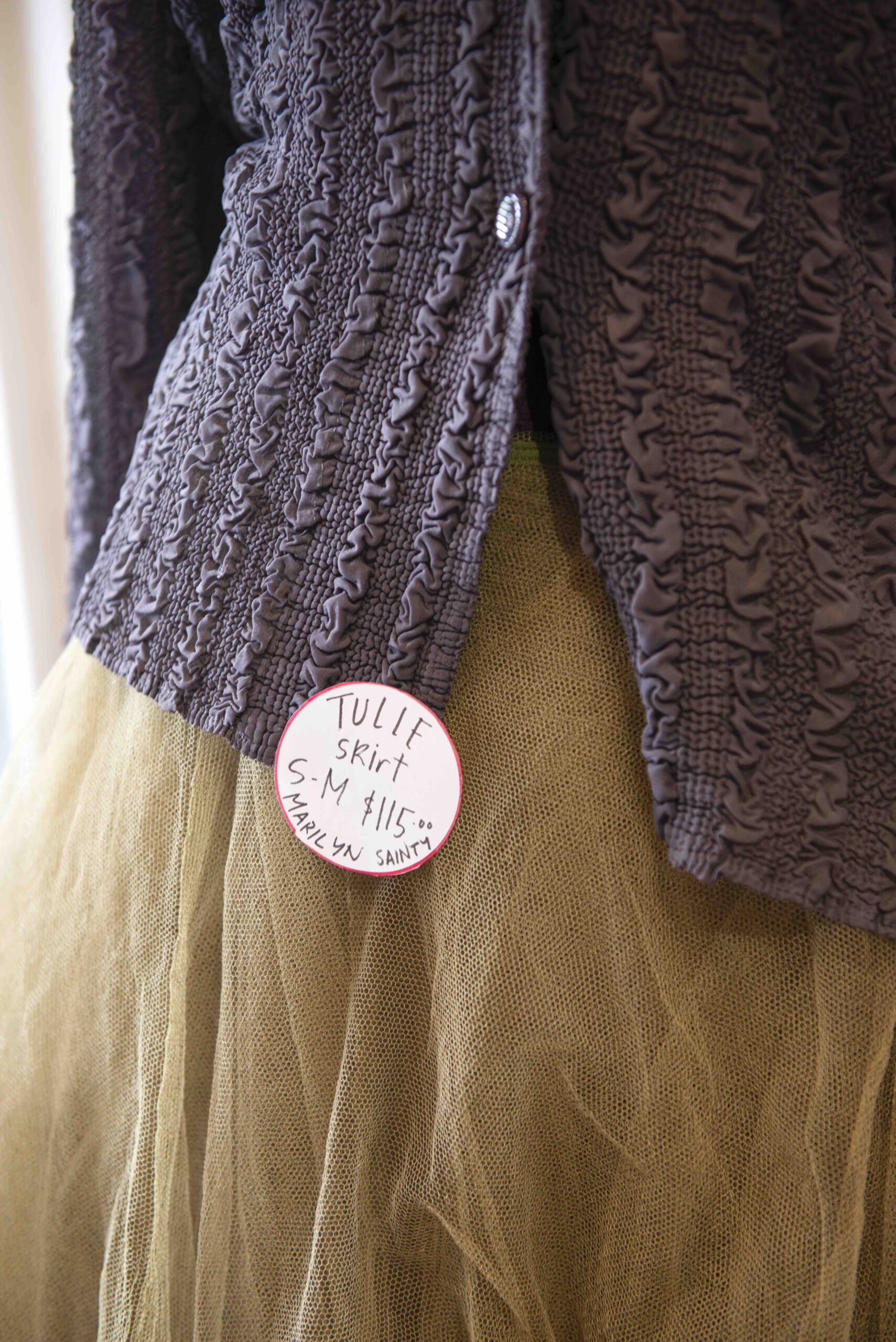
An environmental win
A bargain for you is also a bargain for the planet. As you probably already know, the environmental impact of producing new clothes is staggering: between the resource costs of producing new materials, assembling them into garments, transporting them to the store and disposing of the thousands of garments that aren’t sold, fast fashion is no friend to the planet. Buying second-hand, by contrast, is essentially a form of recycling, because you give a used item a new life, diverting it from landfill.
Egdell adds that opshopping encourages an even further form of sustainability, at least in her experience: really wearing your clothes. With a small capsule wardrobe of pieces she deeply loves and has taken care to match, Egdell is all about quality over quantity. “Just because you buy something second-hand, that’s cool, you tick that box, you’re being sustainable,” she says. “But I think also really wearing your clothes and enjoying them and loving them… for me, that’s been the next step in the journey of my consumerism.”
Buying items you deeply love – which opshopping can help with – and then wearing them to the end of their lives is the most sustainable fashion can get. In Egdell’s own wardrobe, for instance, she has an opshopped orange denim three-quarter length coat (“it sounds awful but it’s not!” she laughs) that she’s been wearing regularly for five years. “I know I can keep wearing it for another five, and that’s where I’m finding a lot of joy as well as challenge,” she says.
She notes that you don’t have to think of wearing the same item for years as boring or repetitive, either. Not only are most people not registering what you wear as much as you think, items kept for years change over time. “When you wear something till it falls apart, its whole character changes,” she says. “You can have a new pair of dark blue jeans and by the time you’ve worn them for three or four years, they’re ripped and light blue.”
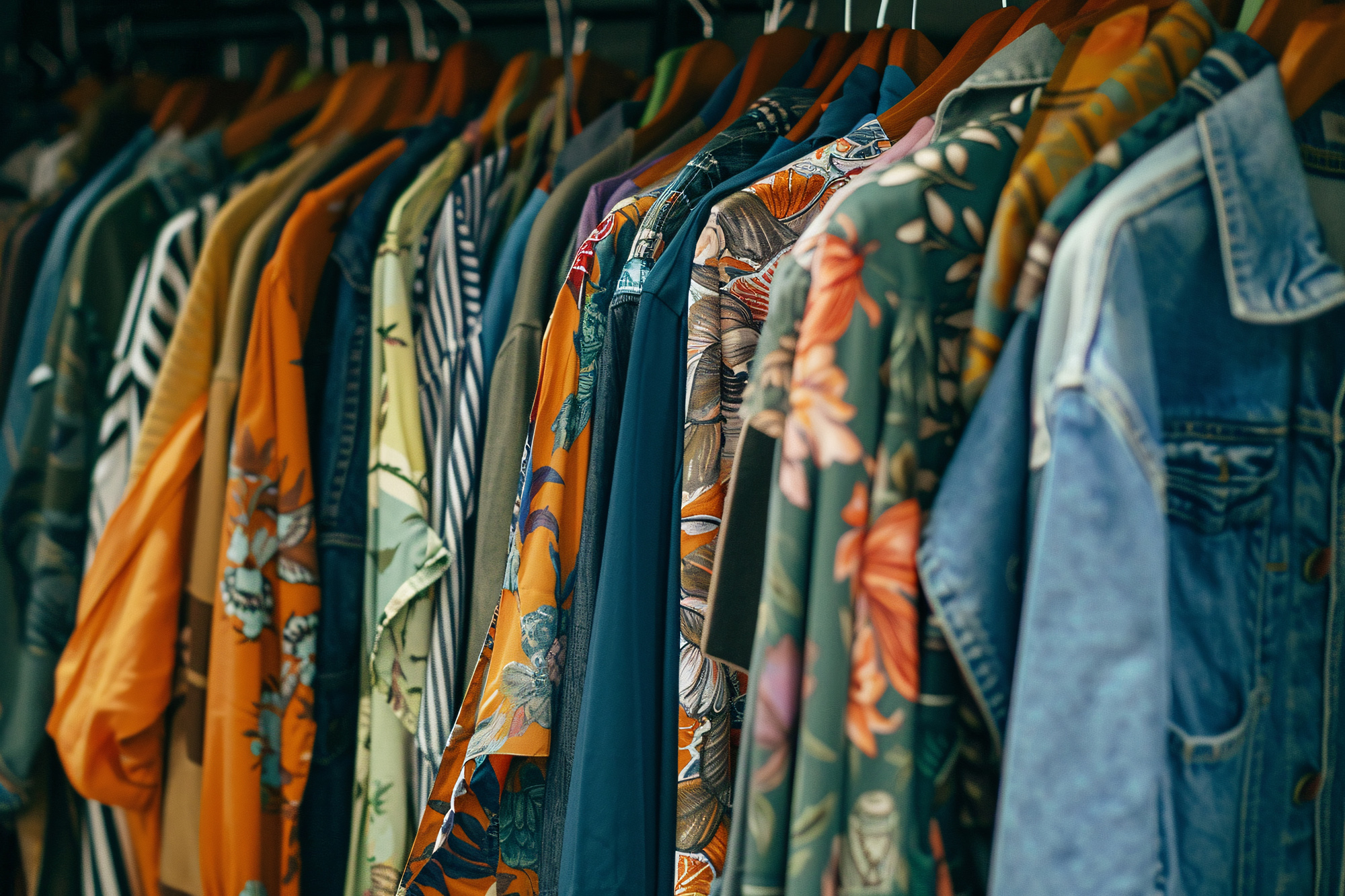
What not to opshop
Egdell, Larkin and Moffat are all keen opshoppers – but all three draw the line somewhere. For Moffat, underwear and socks are in the no-go zone, while Larkin prefers to buy her shoes new because she tends not to find any she likes in top condition second-hand. For Egdell, meanwhile, underwear is also off the cards – but swimwear isn’t. “I know a lot of people sort of go, ‘ugh, why would you buy a swimsuit second-hand?’ – but I take them home, I wash them with an anti-bacterial wash and it’s perfectly safe.”
It all comes down to personal taste, but all three women stress that even if your wardrobe is mostly opshopped, you don’t have to restrict yourself unnecessarily – it’s not all or nothing, and shopping should still be fun.
For Egdell, for instance, it’s totally reasonable to buy a new luxury item you’re going to wear for years – something like a winter coat or cashmere jumper. Plus, it can be nice to support designers whose work you love. Larkin treasures the Tyler McGillivary pieces in her wardrobe and adores Kiwi designer Penny Sage, whose pieces she says are well-tailored and made to last. And Moffat loves to support Kiwi designers and says if she sees something new that she loves and knows she’s unlikely to ever find second-hand, she’ll snap it up.
Treasured finds
The women treasure certain opshop finds, saying they’re just as precious – if not more so – than a luxury purchase new. Moffat’s wardrobe is bursting with second-hand treasures, from her collection of dreamy 1950s gowns, to her antique art deco wedding ring. For Egdell, meanwhile, her small wardrobe is centred around a few statement items she deeply loves – such as the orange denim coat mentioned earlier.
Some of the women’s favourite clothes are tied up with memories – like the silk couture gown and snakeskin Rodolphe Menudier heels Moffat thrifted in Paris and wore to a magical night at the opera, or the metallic jade green 60s gown she wore in March 2020 on the first pandemic Formal Friday.
Other garments are favourites for their versatility. Egdell fondly remembers thrifting a jacket she was pretty sure was a child’s tuxedo jacket around 25 years ago. “I’m only 4”10 and I was quite petite too, so it screamed structured jacket rather than kid’s tuxedo,” she remembers. “It was an amazing shape and slightly cropped and I wore it for years, with everything – over dresses, with jeans. No one could ever place what the jacket was because obviously it was very different!” She also bought a pair of Margiela tabby rubber-soled boots – featuring a bit of orange embroidery to match her favourite orange coat – about five years ago and says she’s worn them at least three times a week ever since. “They’re finally falling to pieces, but they’ve been really well loved,” she says.
Setting yourself up for success
So what’s the secret to finding a treasure? Ultimately, it’s down to luck and persistence, say the experts. It helps to visit regularly, and be opportunistic, because you won’t find something every time – Egdell recommends making it a bit of a habit if you have the time, popping in if you pass an opshop on your way to work, or doing a sweep every couple of weeks if you prefer shopping second-hand online. “You want to go in often enough that you can spot the new things,” she says. “It also helps to make friends with the staff – they’re there every day and know every single item in store, so if you can take the time to chat to them, they’ll remember what brands you like, what size you are, what you’re looking for.”
Moffat and Larkin meanwhile, recommend embracing the unexpected and going with the flow – “opshop” is short for “opportunity shop”, after all.
“When I walk into an opshop, I’m open to finding anything,” says Larkin. “I go in with a relaxed frame of mind and enjoy the process.” Although she says she can be tenacious when hunting out a particular colour or type of garment, Moffat is similarly open to seeing what a shop has to offer, rather than going in with a plan. Overall, patience and open-mindedness are key – and it’s okay not to be successful right off the bat. “Sometimes you leave with nothing, and that’s okay,” says Moffat. “Practice makes progress. Like all things, thrifting is a skill and you get better at it the more you practise.”
It pays to look outside of the womenswear section, too. For Larkin, the “costume” section and even the kids’ racks have turned up treasures, while Moffat says some of her favourite finds have been “men’s” clothing, including blazers, tees, knitted jerseys and even shoes. “Ultimately, there is no such thing as gendered clothing,” she says. It’s all just clothing – so don’t feel limited by the labels above the racks.
A couple more tips? Wear clothes you can change out of easily – think over-the-head pull-on dresses and socks and slides. You don’t want to spend ages wrestling with buttons or jeans zips every time you try something on. Ignore size labels – so many are incorrect by today’s standards that they’re basically meaningless. And Larkin adds that while it’s great to take a friend opshopping with you, it helps to choose them wisely! “You don’t want to have your time cut short by someone who wants to have a quick look or gets bored easily,” she says. “Find a friend who is in it for the long haul or go alone.”
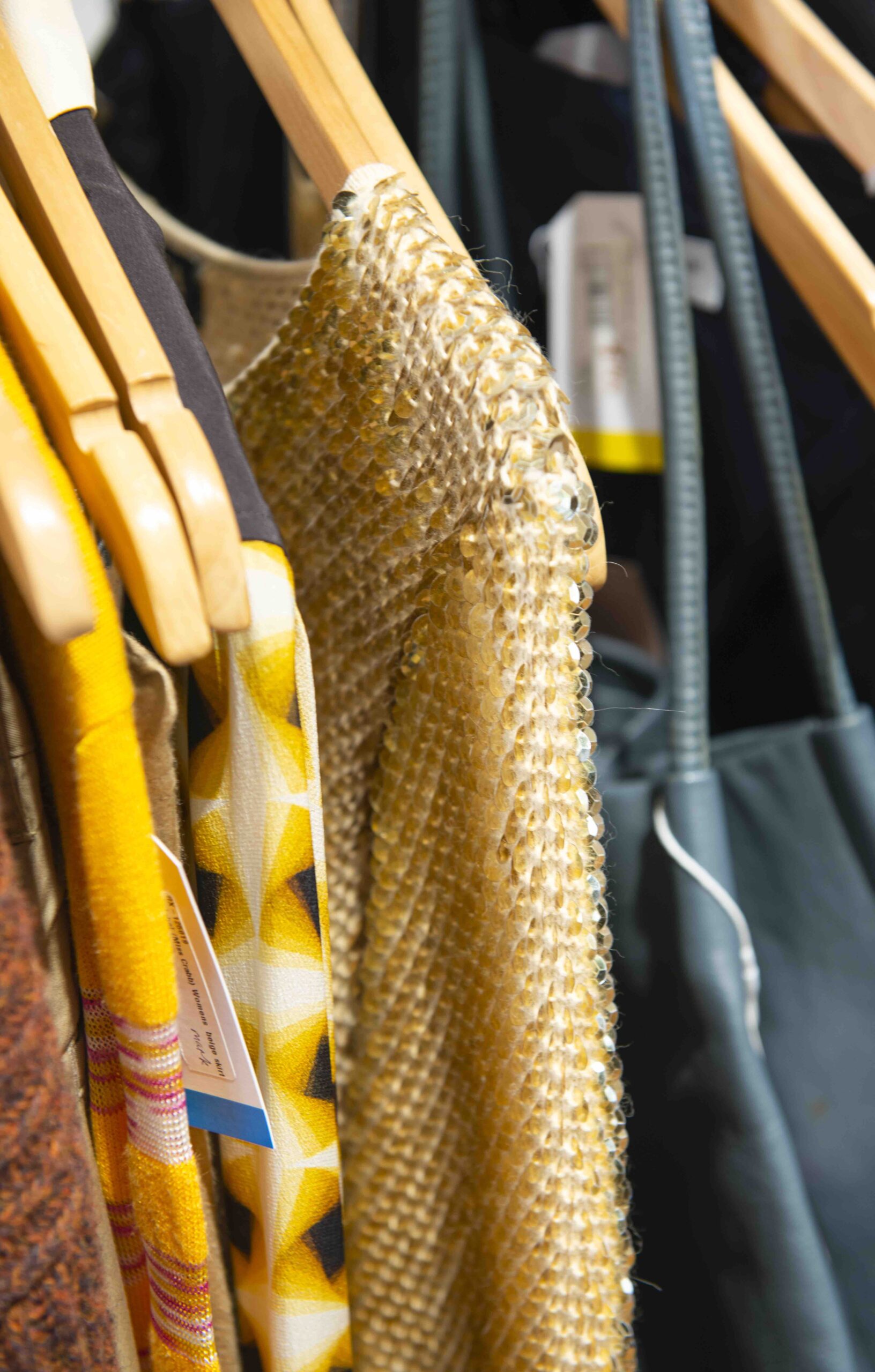
How to check a garment
When you’ve found something you think you might want to buy, there are a couple of points to check before you whip out your wallet.
Egdell recommends avoiding any man-made fabrics that don’t breathe, such as polyester and nylon. Not only do they not wear as well over time, they more easily trap smells. She also suggests a bit of care around buying woolly jumpers. “You really want to make sure they haven’t been shrunk,” she advises. “Quite often, a 100 per cent merino or cashmere jumper will look fine, it will be a normal size and shape, but if you feel that the soft fibres have gone slightly crunchy, that means it’s been washed incorrectly and will tear.”
Overall, she says, it’s safest to stick to silks, linens and cottons – all natural fibres that wear well. It also pays to check carefully for defects. “Only buy something that needs repairing if you know you’re going to get around to fixing it,” says Larkin. “I used to have a huge pile of great pieces that needed to be hemmed or taken in, and it took me forever to get around to it.”
For Egdell, an even bigger red flag than a hole, stain or broken zip – all of which can be repaired if needed – is a lingering smell. “Items may smell fine when you’re in store, but as soon as you wear them for a bit or you get outside, you might discover they have a certain odour, and anything like heavy perfume or cigarettes or human smells… you just cannot ever get rid of those,” she says. To avoid disappointment, it pays to turn the garment inside out in store, make sure the interior is in good condition and have a bit of a sniff.
Home care
Once you’ve bought something, our experts recommend a wash before wearing. Moffat pops new garments in the washing machine with some Canesten Hygiene Laundry Rinse or performs a quick and gentle handwash, then hangs the item to dry in the sun. Similarly, Larkin gives all second-hand garments a wash before wearing, but warns that retro fabrics particularly can run in the wash. If she thinks that’s likely, she’ll test an item by wetting it, check if the water turns the colour of the fabric and if so, wash it by hand or separately from other clothes.
Egdell says she’d personally only buy second-hand clothes that are ready for wearing straight off the rack – such as the clothes at Tatty’s. But she recommends giving second-hand clothes a quick steam with an industrial steamer, if you have access to one (they’re often found at drycleaners). A quick steam will freshen, clean and sterilise a garment – and make it look its best. Then it’s ready for its first foray out into the world as part of your glorious wardrobe.
